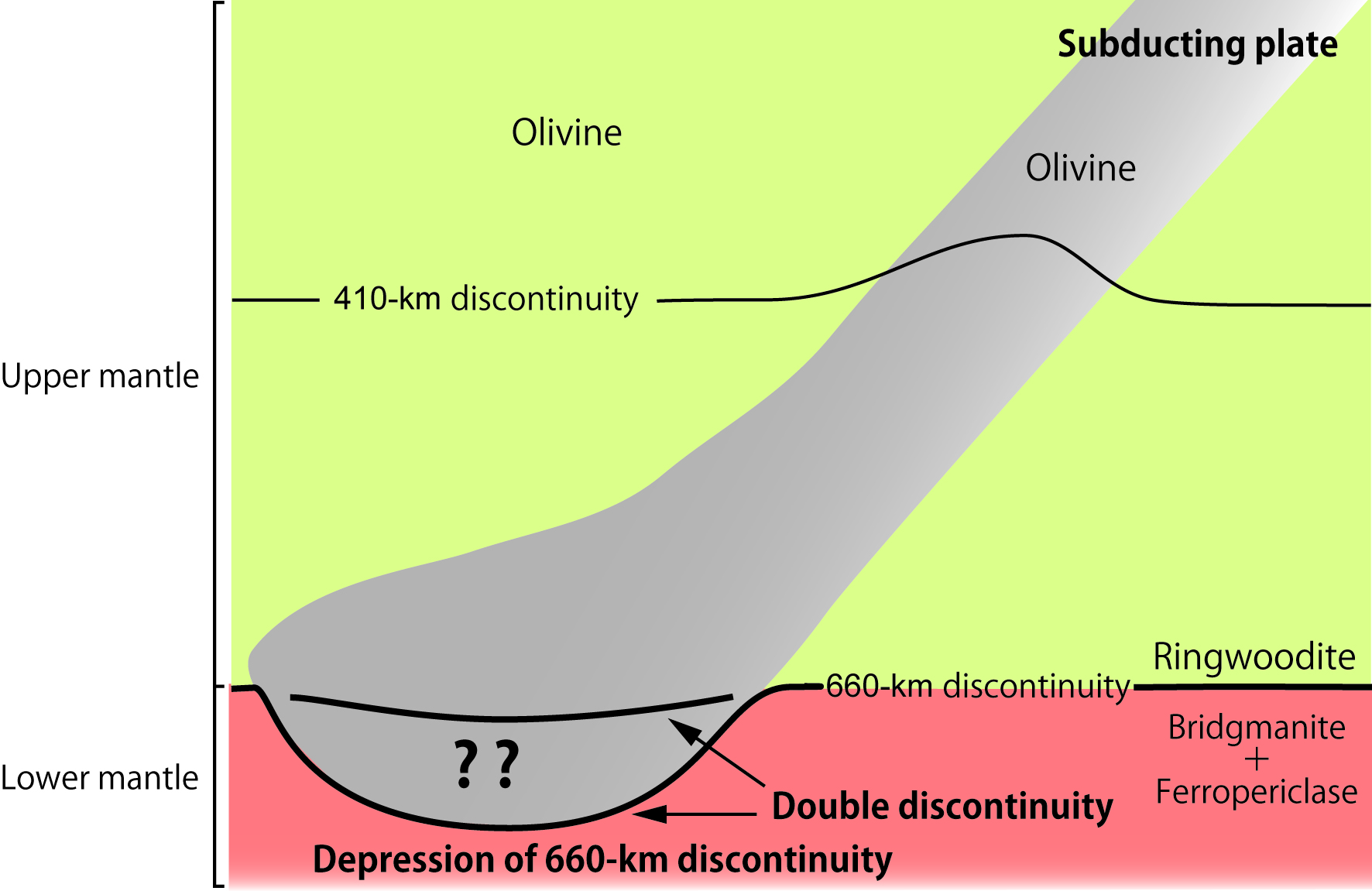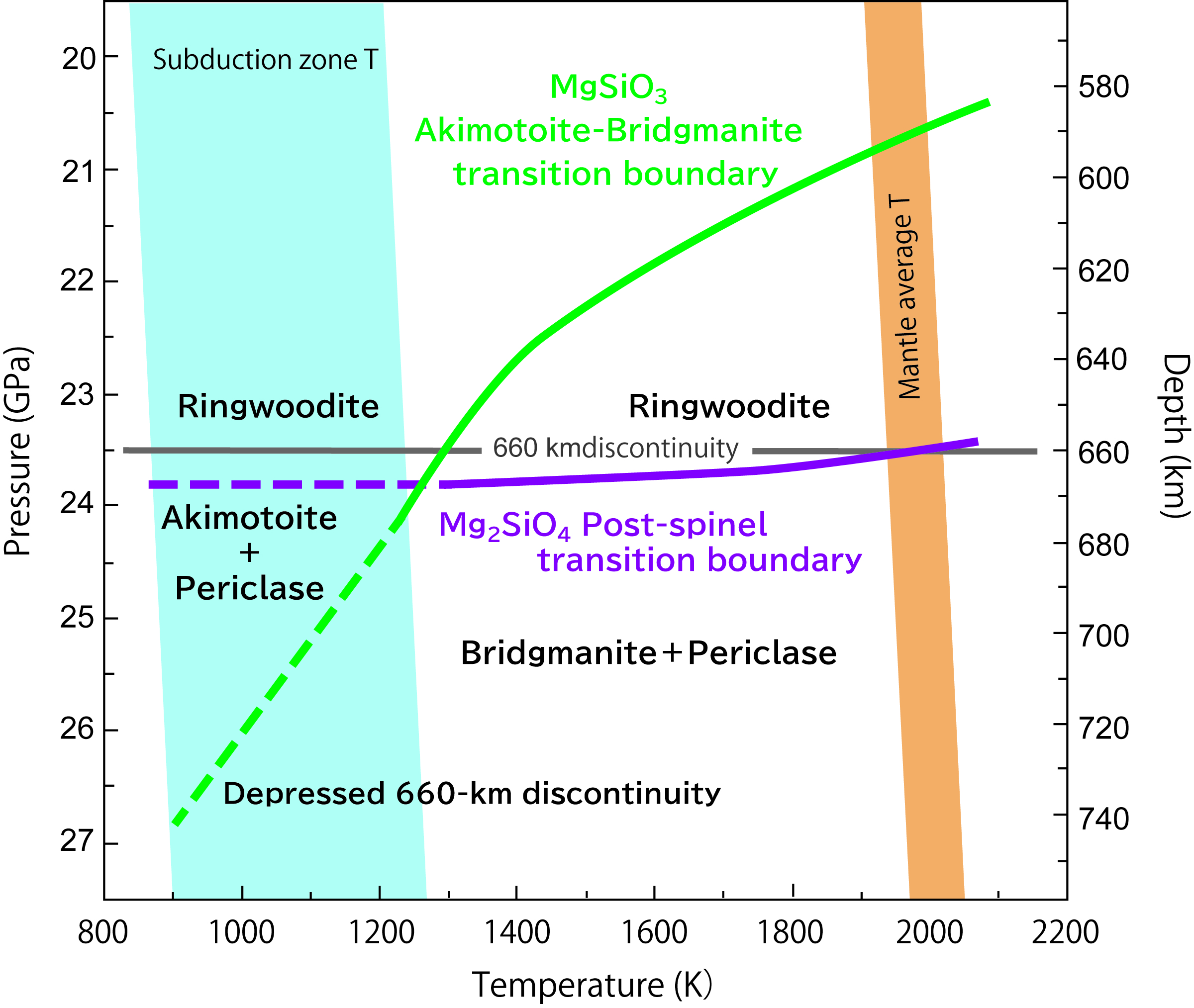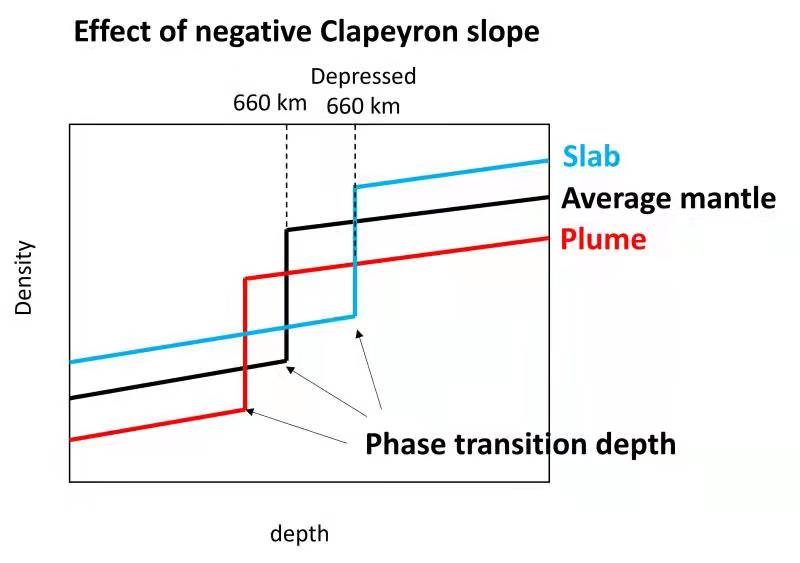Depressed 660-km discontinuity caused by akimotoite-bridgmanite transition - Dr. Takakuki Ishii
JANUARY 6, 2022
New work from a team of scientists co-led by Dr. Takayuki Ishii from HPSTAR reported that the large depressions of the 660-kilometre discontinuity in cold subduction zones is related to an extremely steep akimotoite-bridgmanite transition at low temperatures. The slab stagnation may also be casued by the significant upward buoyancy casued from this deeper and delayed transtion in the slab. The study is published in the recent issue of the journal of Nature.
The upper-lower mantle boundary is globally located at a depth of 660 km, which is called the 660-km seismic discontinuity. It is significantly depressed down to 740 km beneath Tonga subduction zone, which is coolest in subduction zones. The 660-km discontinuity is thought to be caused by the decomposition of (Mg,Fe)2SiO4 ringwoodite to (Mg,Fe)SiO3 bridgmanite + (Mg,Fe)O ferropericlase (post-spinel transition). Therefore, it has been thought that the depression of the discontinuity below the subduction zone is due to the increase in the depth of this decomposition reaction caused by the relatively low temperature (namely the negative Clapeyron slope of the post-spinel transition). However, according to previous high-pressure experiments, the post-spinel transition has a negative but gentle Clapeyron slope (little temperature dependence) and cannot explain the significant depression. In addition, the 660-km discontinuity in this region is also observed at a depth of 670 km, showing the double discontinuity.
Conventional high-pressure experiments have technical difficulties in accurate phase identification. The multi-anvil technique in combination with in situ X-ray diffraction provides the most reliable high P-T phase relations data because of the well-controlled P-T conditions. Nevertheless, the majority of previous experiments determined phase stability based only on the formation of new phases from a starting material that is stable under ambient conditions. Such data just indicate that the newly formed phases are more stable than the starting material, which do not provide any information about phase equilibrium between high-pressure phases for a phase boundary of interest. The definition of phase equilibrium is the balance between the normal reaction (lower-P phase to higher-P phase) and reversal reaction (higher-P phase to lower-P phase). The stability of the lower- and higher-P phases must therefore be determined by bracketing based on the results of a pair of normal and reversal reactions. However, the kinetics of phase transitions of mantle minerals is extremely sluggish, making the accurate determination of a phase boundary difficult.

Caption: Plate tectonics arond 660km in the subduction zone.
In this study, they conducted in-situ observation experiments under high pressure and high temperature in combination with multi-anvil press strictly based on the definition of phase equilibrium, to determine MgSiO3 akimotoite-bridgmanite transition and the post-spinel transition in Mg2SiO4. They developed a new technique to determine a stable phase: through the intensity increase or decrease of X-ray diffraction peaks of phases under coexistence of low-P and high-P phases. They have usually synthesized a phase from a starting material that does not corresponding to a phase boundary of interest. Such an experiment cannot provide any information about the stability because a newly formed phase may not be stable at the synthesized condition because of sluggish kinetics of phase transition. Our technique can avoid misidentification of a stable phase because intensity increase/decrease of phases provides us information about direction of a reaction, in which intensity increase/decrease of a phase means that it is stable/unstable at the condition. Thus, the kinetic problem on determining phase stability was able to be removed.

Caption: Phase boundaries of MgSiO3 akimotoite-bridgmanite transition (Green line) and Mg2SiO4 post-spinel transition (purple line) and stable phases in Mg2SiO4 system (black characters).
They show that the post-spinel transition is consistent with the depth of the 660-km discontinuity along with average mantle geotherm and has very gentle negative Clapeyron slope, indicating that the post-spinel transition cannot sufficiently explain the large depressions of the 660-km discontinuity beneath subduction zones. On the other hand, the akimotoite- bridgmanite transition has a large negative temperature dependence especially at low temperatures corresponding to subduction zone temperatures.
Beneath cold subduction zones, ringwoodite should first dissociate into akimotoite plus periclase, and then akimotoite transforms to bridgmanite with increasing depth, explaining the multiplicity of 660-km discontinuity. The steeply curved akimotoite-bridgmanite boundary leads to much deeper transition pressures at lower temperatures, interpreting the depression of the 660-km discontinuity. Thus our results have solved two enigmas related to the 660-km discontinuity and cold subduction zones.
Moreover, the extremely steep negative AB phase transition at low Twill cause strong upward buoyancy and and thus stagnation of cold subducted slabs.

上-下地幔边界在正常区域位于地表以下660公里的深度,而在有冷的俯冲板块物质扰动的区域,上-下地幔边界会严重塌陷,可以延伸至板片底部~740公里深度。对于此边界塌陷的成因一直存在很大的争议。近日,北京高压科学研究中心的Takayuki Ishii研究员与德国拜罗伊特大学的Artem Chanyshev博士共同带领的最新研究发现上-下地幔边界的塌陷是由秋本石到布里奇曼石的相变导致。该研究澄清了长达多年的关于上-下地幔边界塌陷的争议。另外,他们提出~660公里的普遍发现的俯冲板块的停滞现象也可以用秋本石到布里奇曼石相变产生的巨大的浮力来解释。相关工作以“Depressed 660-km discontinuity caused by akimotoite-bridgmanite transition”为题发表于国际顶级期刊Nature上。
